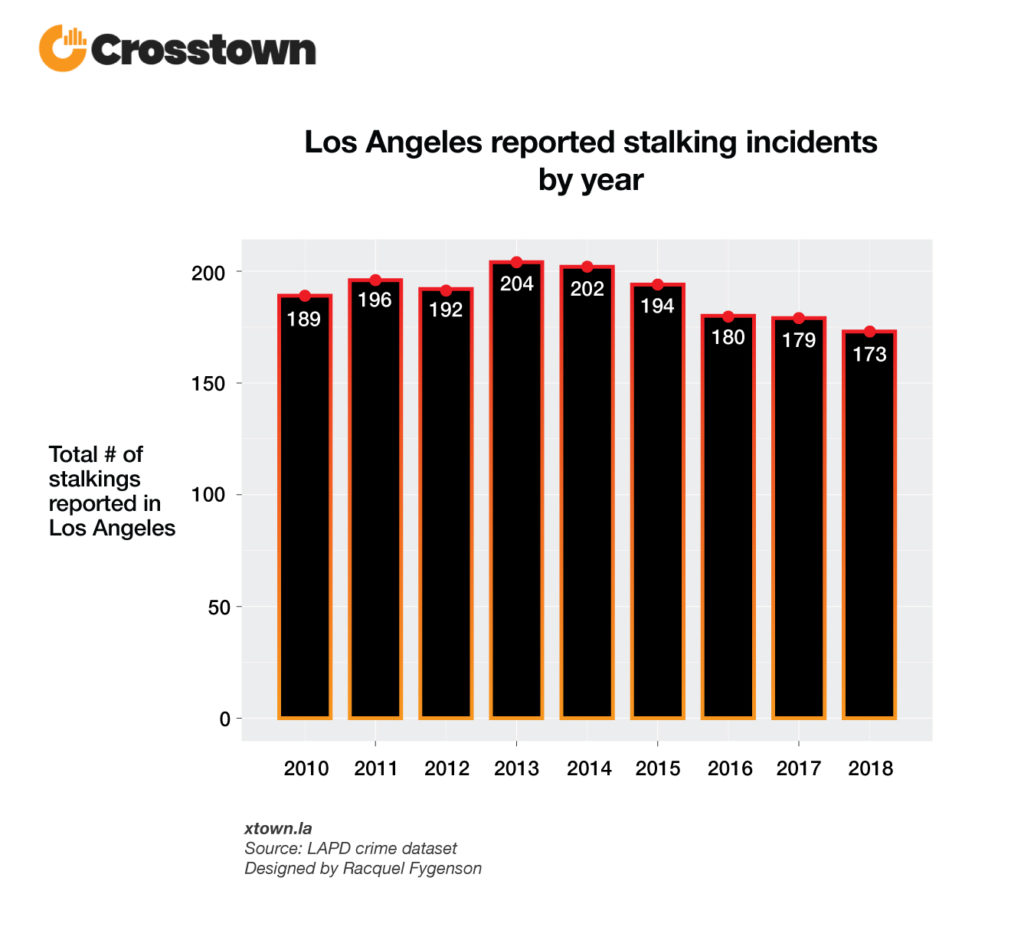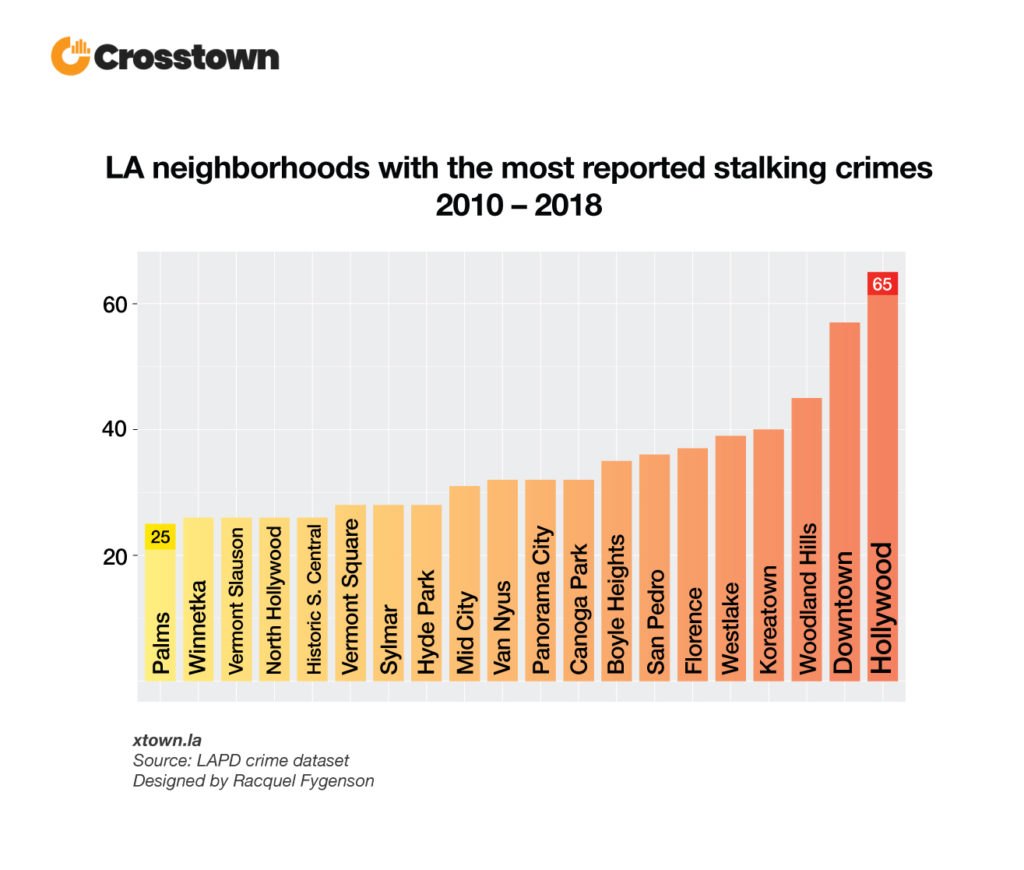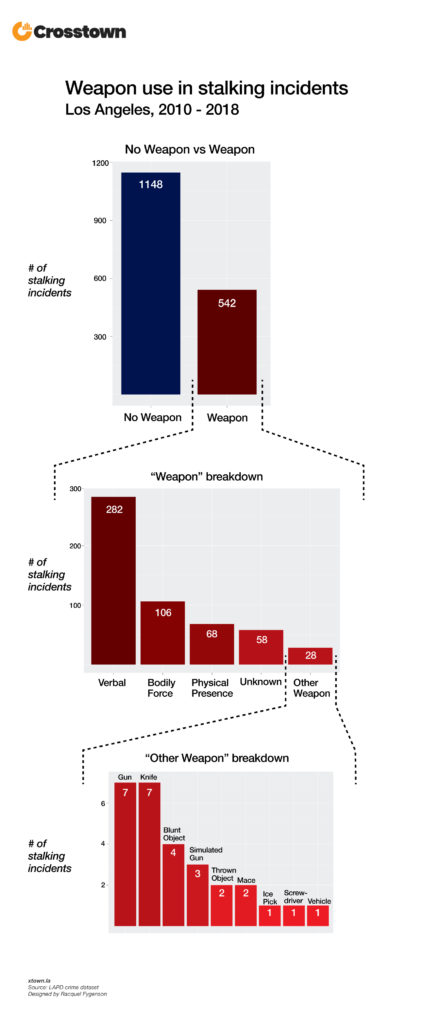OK, you’re not famous, but you still might be stalked
You may have heard about the man recently convicted for stalking the singer Rihanna. But there are many more cases you’ll never hear about. Between 2010 and 2018 there were 1,709 total cases of stalking reported to the Los Angeles Police Department.
While reports of stalking decreased by 3% from 2017 to 2018, they have mostly remained steady over the past nine years, with reported incidents hovering between about 170 and 200 every year.
When does it happen?
Over the past nine years, stalking incidents peaked in 2013 with 204 cases reported in the City of Los Angeles. Last year had the fewest, with 173 cases.

This piece is the second installment in a new Crosstown weekly feature, where we look at crimes that don’t always get attention because the reported numbers are relatively low. They may be uncommon, they may have fallen under the radar, they may even seem a little weird. But they’re important and interesting and we’re here to cover them. For our first installment, we took a look at the adage “don’t take candy from strangers.”
Over the past nine years, there have been at least seven stalking incidents every month. The month with the highest reported stalking incidents was August 2013, with 28.
Where does it happen?
Between 2010 and 2018, the neighborhood with the most reported stalking crimes was Hollywood, with 65 reports over nine years. This was followed by Downtown with 57, and Woodland Hills with 45.
Not all neighborhoods had that many incidents. Other than these top three neighborhoods, most neighborhoods had between 10 and 40 reports of stalking.

What happens?
Most of the stalking cases did not involve the suspect coming into contact with the victim. In fact, 1,148 reported stalking crimes over the past nine years had no weapon listed.
But sometimes the suspect did interact with the victim. In 282 incidents over the past nine years, the LAPD listed “verbal threats” as the weapon. One hundred and six cases involved “strong arm,” as the weapon, meaning a suspect used their hands, fist, feet or other bodily force against a victim. A screwdriver, a hammer and an ice pick were each used in three separate stalking incidents over the past nine years.

In one stalking incident on July 9, 2016, in the Hyde Park neighborhood, a 66-year-old Hispanic female was attacked by her homeless son at her home. He had vandalized the premises, and threatened to harm his mother while brandishing a hammer.
Unfortunately, this is not the end of the stalking story. In our next segment, we will detail how suspects follow their victims home … and on social media.
How we did it: We examined publicly available LAPD data on reports of stalking from Jan. 1, 2010 (the earliest available data) – Dec. 31, 2018. For neighborhood boundaries, we rely on the borders defined by the Los Angeles Times. Learn more about our data here.
LAPD data only reflects crimes that are reported to the department, not how many crimes actually occurred. In making our calculations, we rely on the data the LAPD makes publicly available. LAPD may update past crime reports with new information, or recategorize past reports. Those revised reports do not always automatically become part of the public database.
Want to know how your neighborhood fares? Or simply just interested in our data? Email us at askus@xtown.la.






